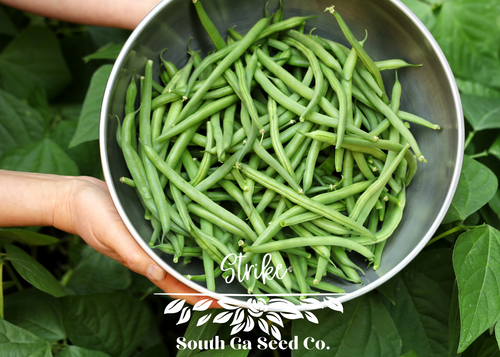The State Half Runner bean, a beloved green bean variety, is favored by both gardeners and chefs for its tender pods and flavorful beans. Specifically adapted to the Southeastern United States' climates and growing conditions, this heirloom variety has gained popularity over the years. Its robust growth and high yield have made it a staple in many home gardens, often cultivated on trellises or poles to support its climbing nature and abundant fruit production. This bean's resistance to common pests and diseases makes it a low maintenance crop for gardeners.
In the kitchen, the State Half Runner beans are versatile, perfect for fresh consumption, steaming, sautéing, or preserving through canning and freezing. Their tender texture and rich flavor make them a delightful addition to various dishes, from simple buttery garlic sides to hearty stews and casseroles. Ideal for sustainable gardening, this variety can be saved and replanted annually, ensuring consistent quality. Whether you're a seasoned gardener or a beginner exploring vegetable cultivation, growing the State Half Runner bean promises a fulfilling and delicious journey.
- QTY: 50
- Seed Planting Depth: 1.5"
- Germination Temperature: 75
- Days to Germination: 7-10
- Row Spacing: 36"
- Plant Spacing: 6"
- 100' Row Yield: 24 lb
- Sun: Full
- Harvest time: 57 days
How to Save Seeds
Runner beans seldom cross pollinate with one another since they are considered to be self pollinators. However that isn't to say it won't occur. So as a precaution it is recommended to grow to different colors of beans near one another if you are limited on space and then observe the seeds when ready. The seed will show signs of crossing if you grew to different colors. If you are concerned about crossing separate by 150ft as a rule. Harvest when completely dried; cure them for a week or so by allowing them to further dry out in their pods spread out from one another, then shell and discard trash.










